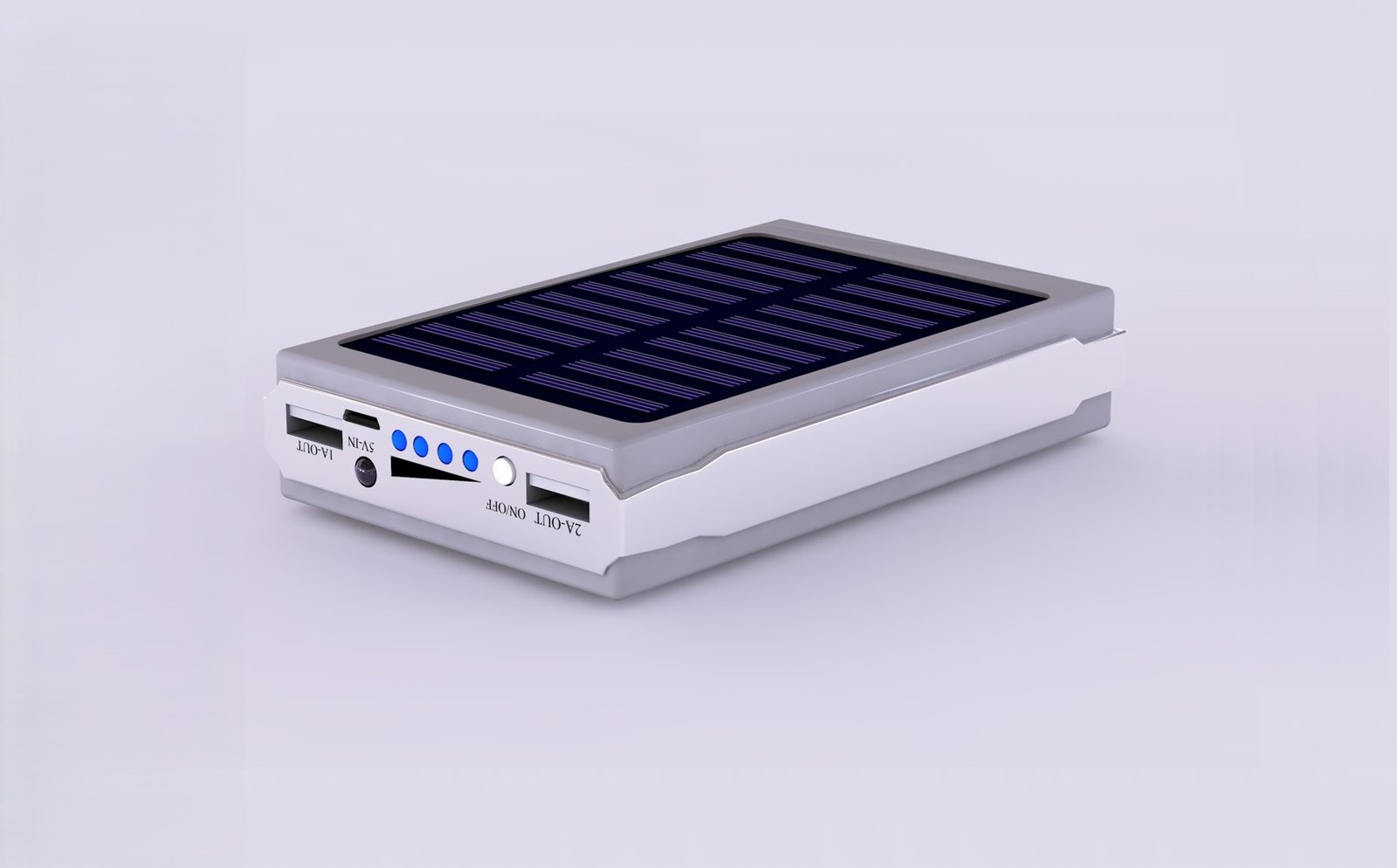
Mini Solar Powerbank
Project Overview: Building a Solar Powerbank
In this project, we make a solar-powered powerbank with additional features, including a high-capacity battery pack, LED panel for lighting, dual USB outputs, and the ability to charge via a micro-USB port or solar panel. This powerbank combines functionality and portability, making it a practical solution for outdoor use and emergencies.
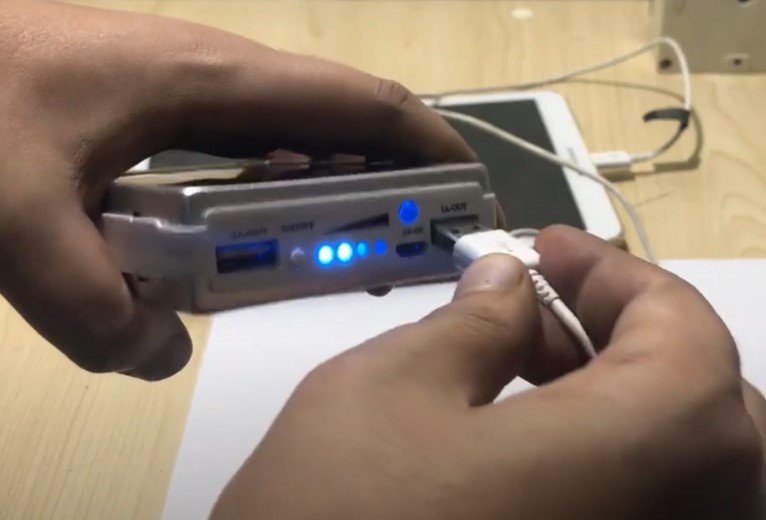
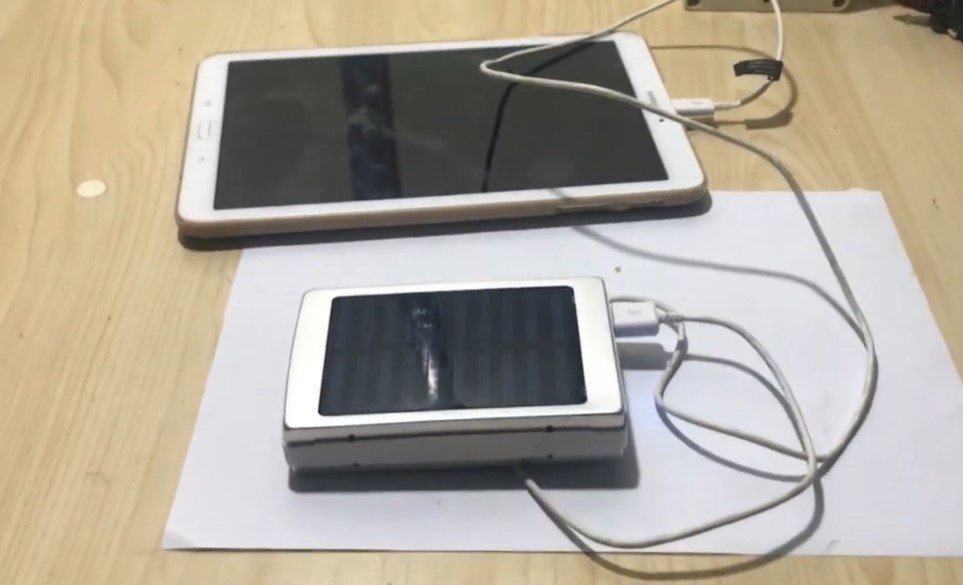
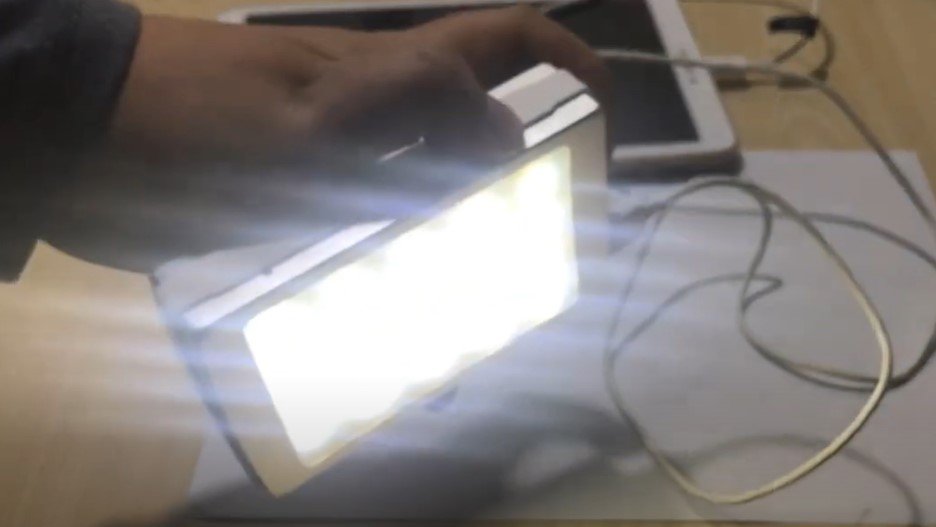
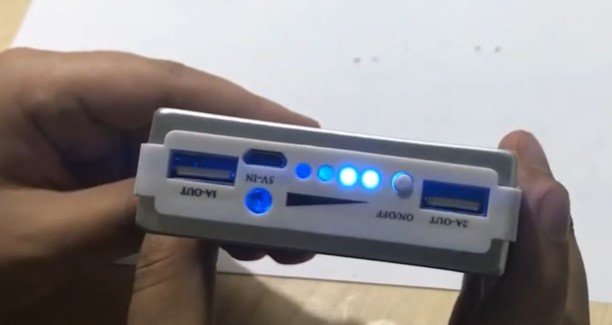
Features of the Solar Powerbank
-
Battery Capacity:
- The powerbank uses five 18650 lithium-ion cells, each with a capacity of 2500mAh.
- Combined capacity: 5×2500mAh=12500mAh5 \times 2500\text{mAh} = 12500\text{mAh}5×2500mAh=12500mAh, providing a substantial charge for multiple devices.
-
Dual Charging Inputs:
- Micro-USB Port: Allows efficient charging of the powerbank from a standard power source.
- Solar Panel: A 1W solar panel provides supplemental charging during sunny conditions. While it’s not enough to fully recharge the powerbank quickly, it can offer minor charging support in emergencies.
-
Dual USB Outputs:
- Two USB ports enable simultaneous charging of two devices at 5V/2A.
-
Battery Level Indicator:
- LED indicators display the remaining battery capacity for user convenience.
-
Integrated LED Light:
- The powerbank includes a large LED panel on one side, providing bright and powerful lighting when needed.
Materials Required
-
Powerbank Module:
- Manages charging, discharging, and boosting voltage to 5V.
-
18650 Lithium-Ion Cells (x5):
- Each cell rated at 2500mAh.
-
Solar Panel:
- 1W output for auxiliary charging.
-
LED Panel:
- For integrated lighting.
-
Plastic Film:
- Used to cover and secure components.
-
Powerbank Case:
- A durable enclosure for housing all components.
-
Additional Components:
- Wires, glue, screws, and a soldering kit for assembly.
Step-by-Step Construction
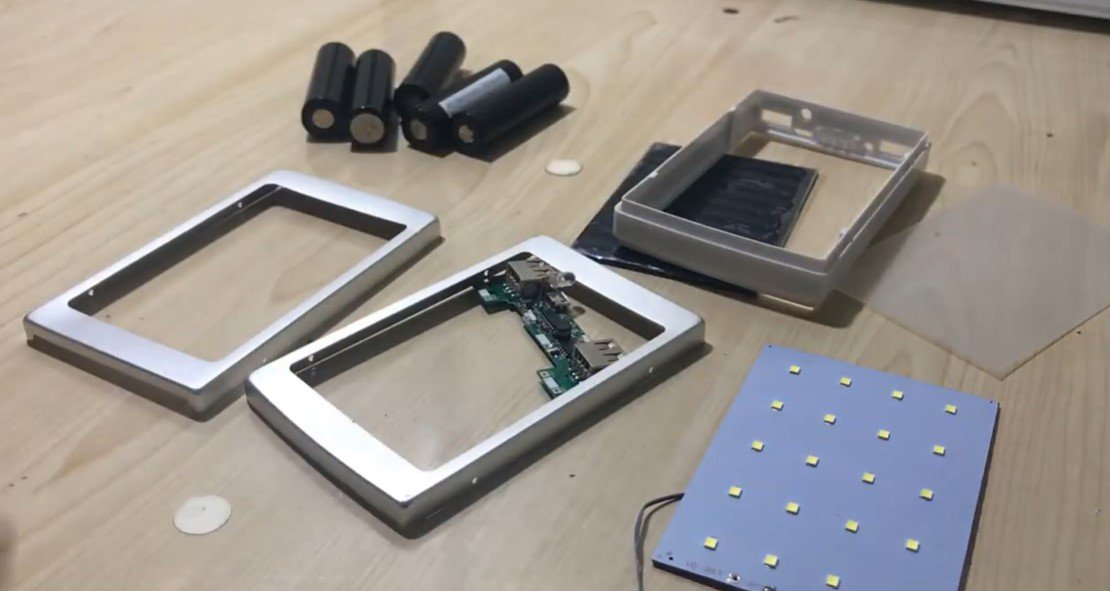
1. Prepare the Battery Pack:
- Assemble the five 18650 cells into a battery pack in the desired configuration (typically parallel for higher capacity).
- Use spot welding or soldering to securely connect the cells, ensuring proper insulation to avoid short circuits.
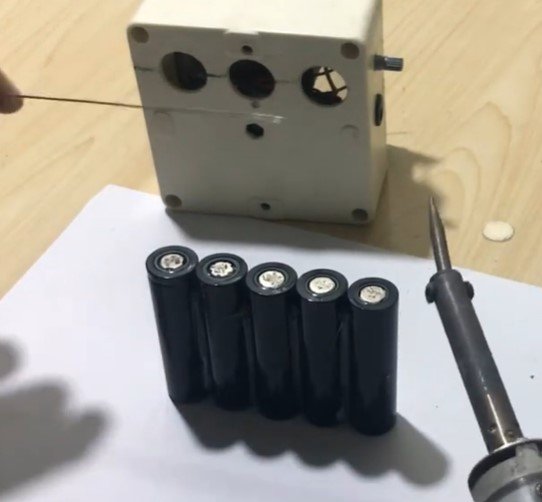
2. Install the Powerbank Module:
- Insert the powerbank module into the designated slot within the powerbank case.
- Ensure the module is correctly aligned with the USB and micro-USB ports.
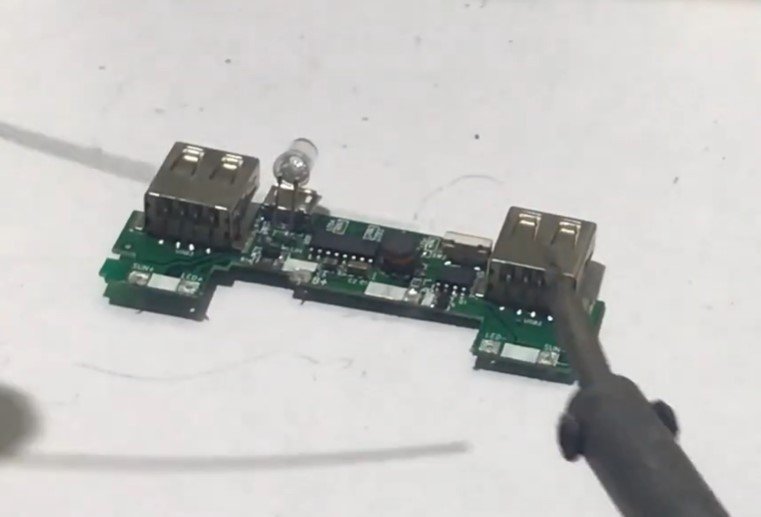
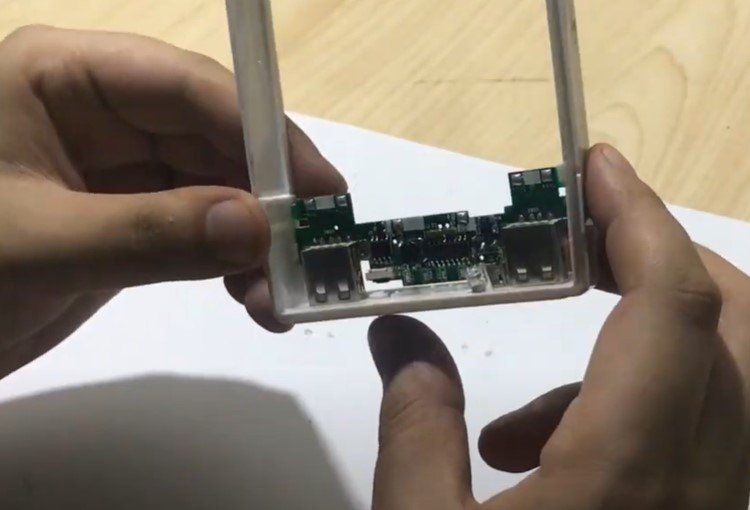
3. Connect the Battery Pack:
- Solder the positive and negative terminals of the battery pack to the respective connections on the powerbank module.
4. Attach the LED Panel:
- Secure the LED panel to the powerbank case using glue.
- Connect its wires to the powerbank module, ensuring proper polarity.
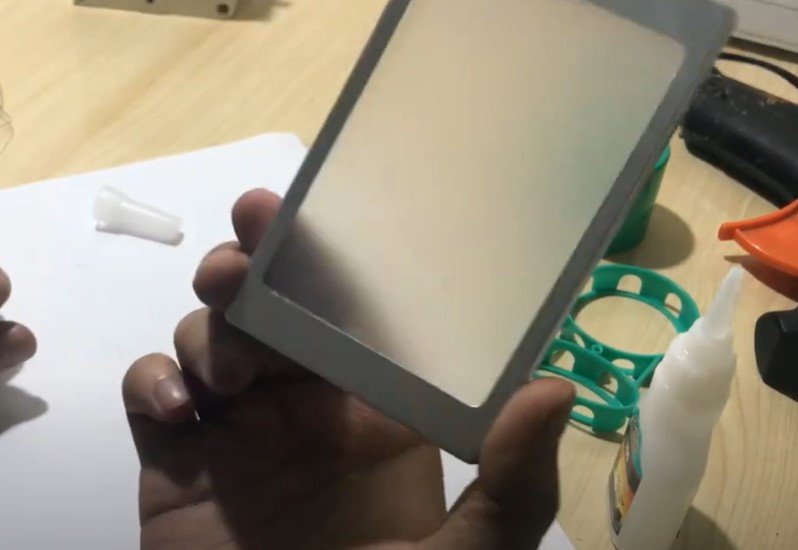
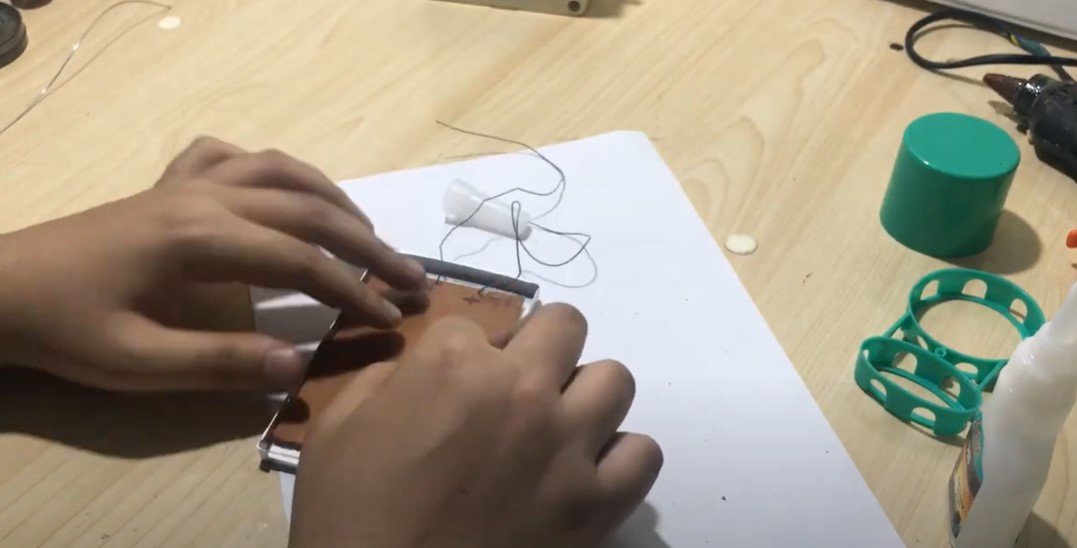
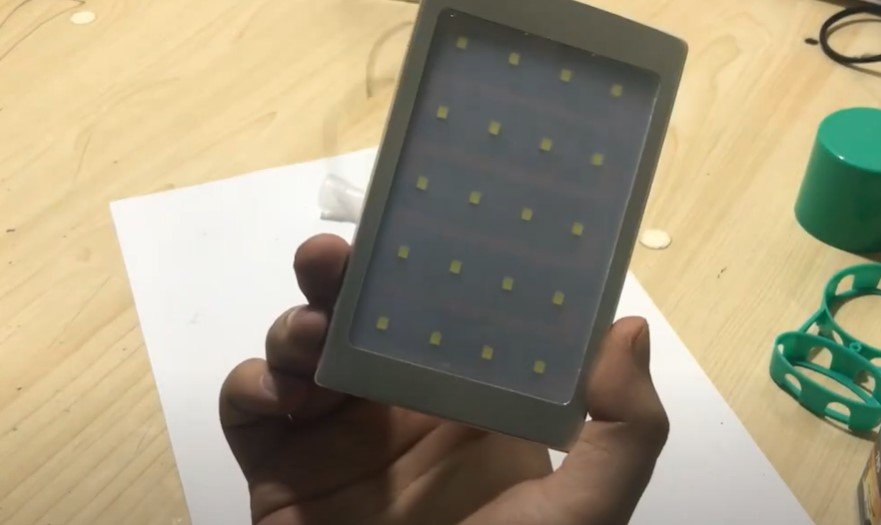
5. Attach the Solar Panel:
- Fix the solar panel to the case using glue or screws.
- Solder its positive and negative wires to the solar input terminals on the powerbank module.
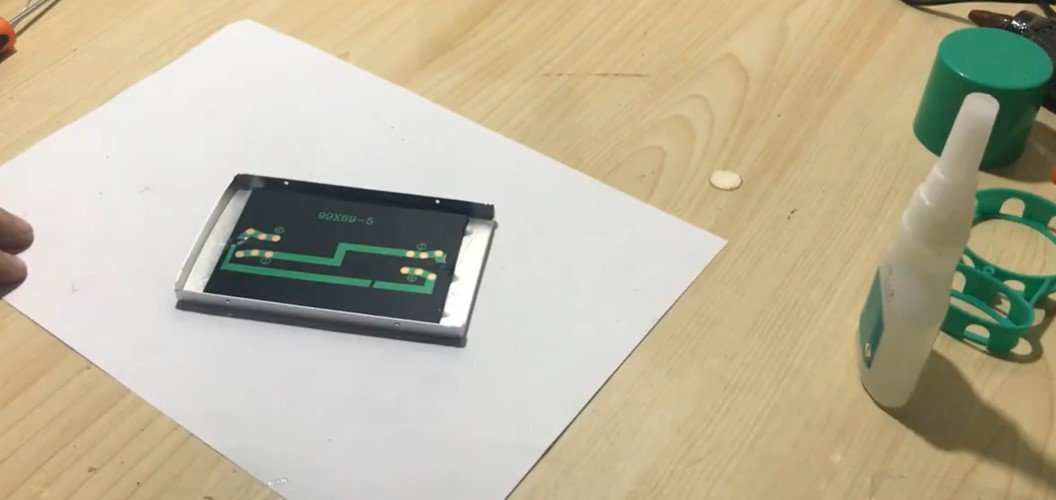
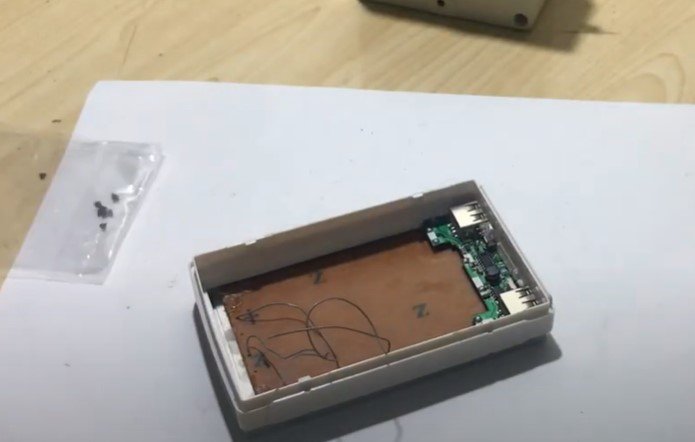
6. Assemble the Case:
- Close the powerbank case, securing the components inside.
- Tighten screws to lock the case, ensuring durability and portability.
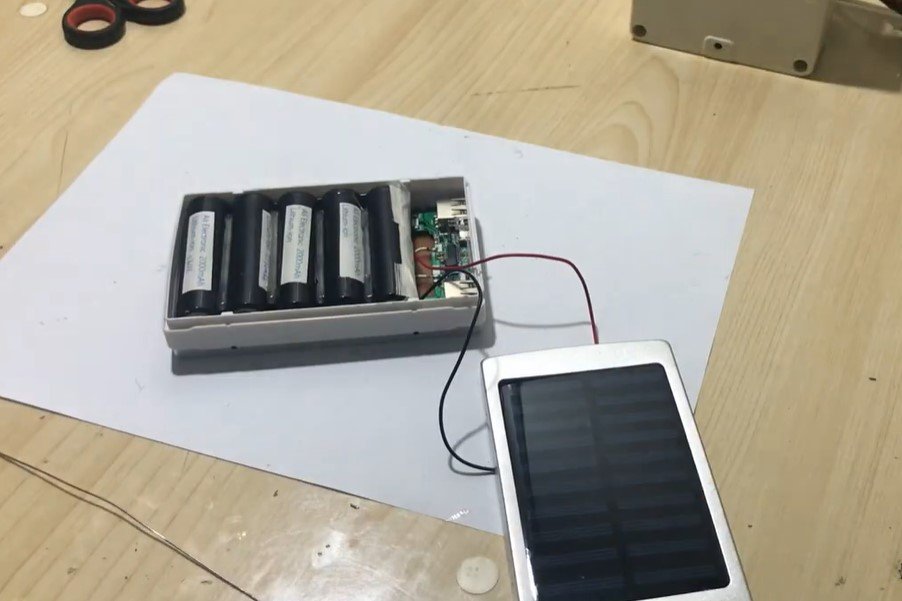
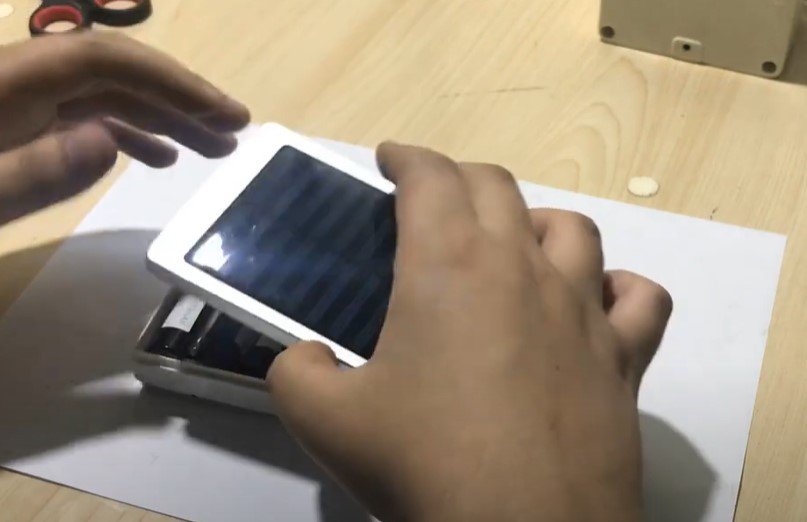
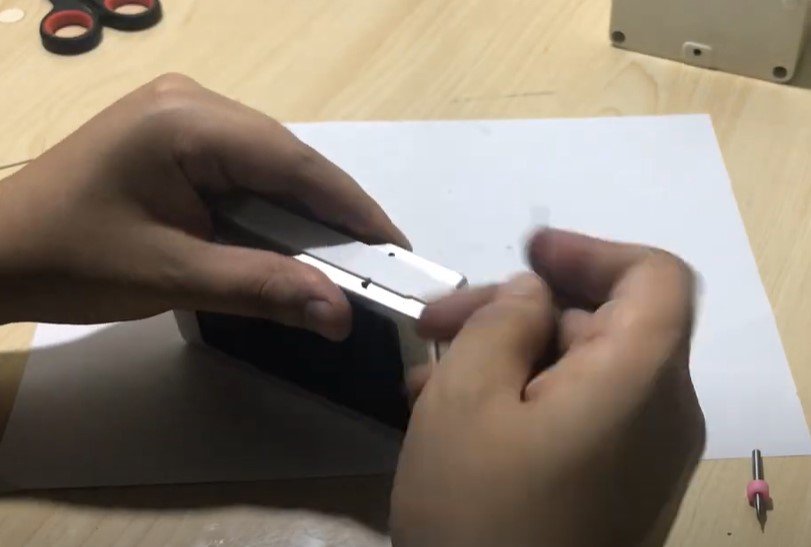
7. Test the Powerbank:
- Verify all functionalities:
- USB output voltage and current.
- Solar panel charging.
- Micro-USB charging.
- LED light operation.
- Battery level indicator.
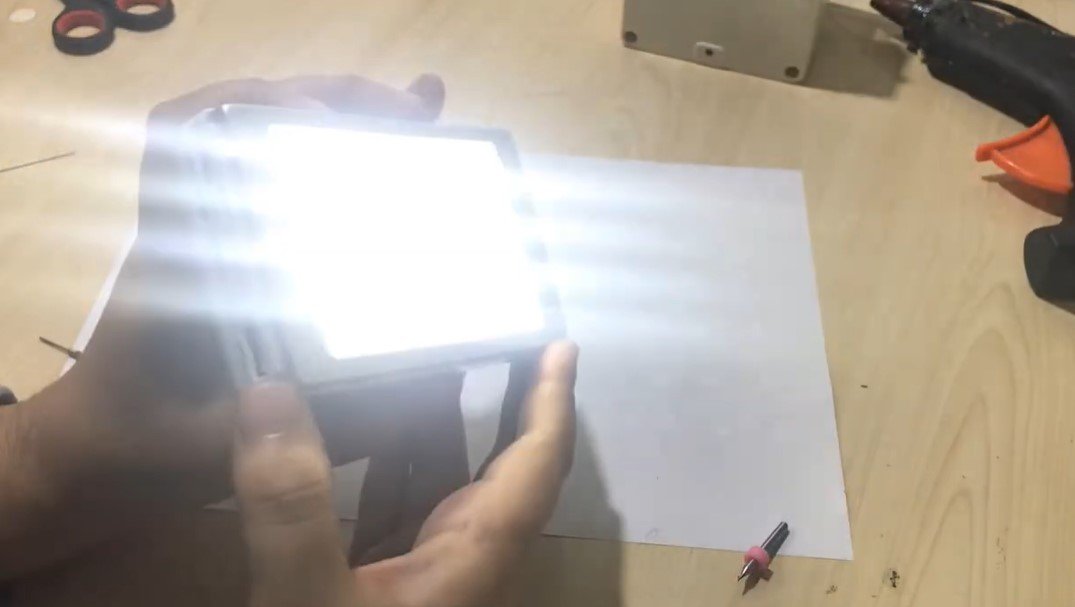
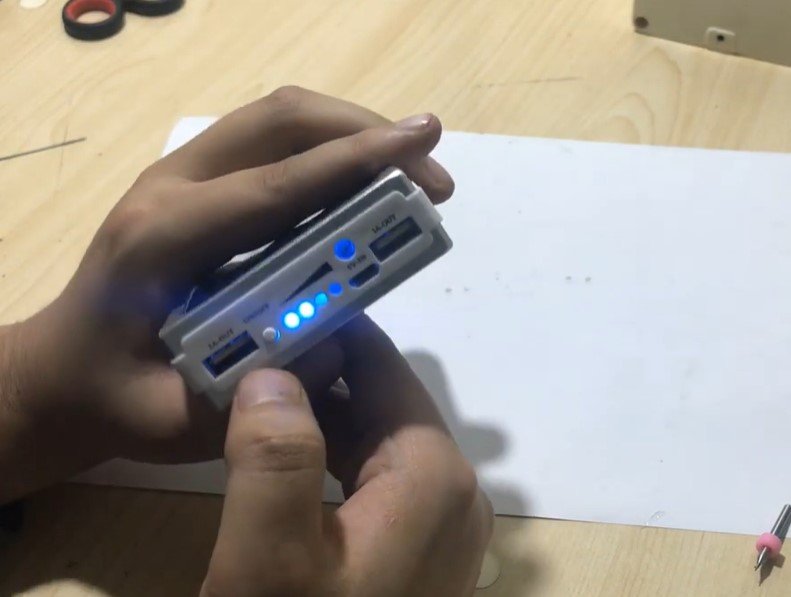
How the Powerbank Works
-
Charging the Battery:
- The powerbank module charges the 18650 cells using either the micro-USB input or the solar panel. It manages the charge rate and protects against overcharging.
-
Boost Converter:
- The module includes a boost circuit to step up the 3.7V battery voltage to 5V for USB output.
-
LED Light:
- The LED panel is connected directly to the module, allowing it to draw power from the battery for bright lighting.
-
Solar Charging:
- The 1W solar panel provides supplemental energy, charging the battery slowly in sunlight.
Advantages and Limitations
Advantages:
- High capacity (12500mAh) for multiple device charges.
- Compact design with integrated LED lighting.
- Dual USB outputs for charging two devices simultaneously.
- Solar panel adds versatility for outdoor or emergency use.
- Battery level indicator ensures user awareness of charge status.
Limitations:
- The 1W solar panel provides only a small amount of charge, requiring extended sunlight exposure for significant charging.
- Limited to charging devices that operate within the 5V/2A specification.
Conclusion
This solar powerbank is a versatile, portable charging solution suitable for outdoor adventures and daily use. It combines high battery capacity, dual charging inputs, and additional lighting functionality, making it an excellent tool for emergencies and travel. By following the detailed construction process, you can create a fully functional powerbank tailored to your needs.
Posted by Ali Aslan at Wednesday 22nd of January 2025 12:05:31 PM